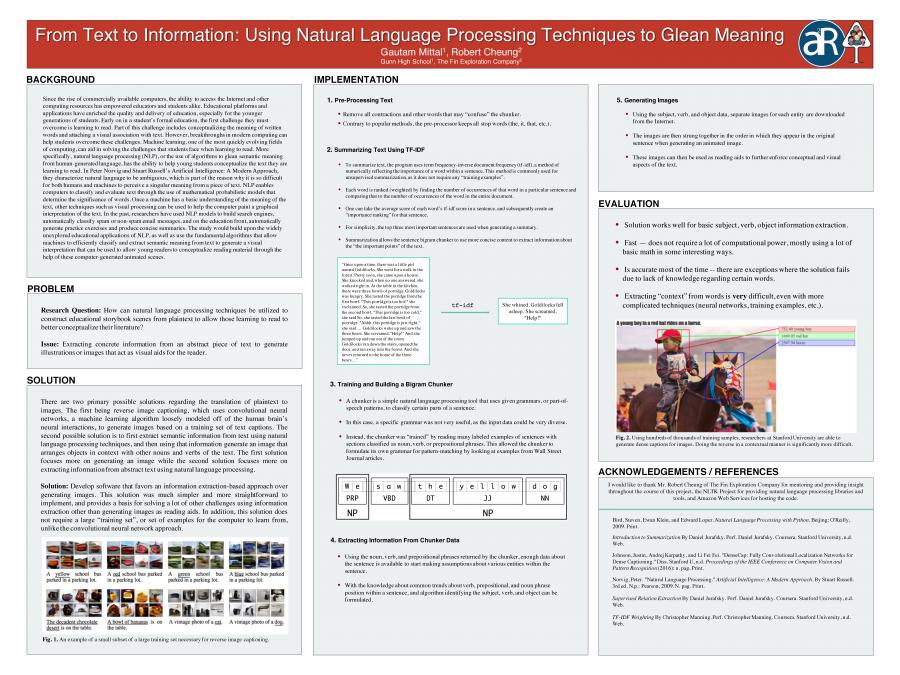Generating Educational Storybook Scenes By Deriving Semantic Meaning From Plaintext Using Machine Learning by Gautam M.
Presentation
Summary
How can machine learning techniques be utilized to construct educational storybook scenes from plaintext to allow those learning to read to better conceptualize their literature? Throughout history, technology has made a significant impact both inside and outside the classroom. Since the rise of commercially available computers, the ability to access the Internet and other computing resources has empowered educators and students alike. Educational platforms and applications have enriched the quality and delivery of education, especially for the younger generations of students. Early on in a student’s formal education, the first challenge they must overcome is learning to read. Part of this challenge includes conceptualizing the meaning of written words and attaching a visual association with text. However, breakthroughs in modern computing can help students overcome these challenges. Natural language processing (NLP), or the use of algorithms to glean semantic meaning from human-generated language, has the ability to help young students conceptualize the text they are learning to read...In Peter Norvig and Stuart Russell’s Artificial Intelligence: A Modern Approach they characterize natural language to be ambiguous, which is part of the reason why it is so difficult for both humans and machines to perceive a singular meaning from a piece of text. NLP enables computers to classify and evaluate text through the use of mathematical probabilistic models that determine the significance of words. Once a machine has a basic understanding of the meaning of the text, other techniques such as visual processing can be used to help the computer paint a graphical interpretation of the text...The study will be broken up into several coherent segments. The first step in completing the research will be to design and train a natural language processing model to analyze and deriving semantics from plaintext. The designing and training of this model should be completed no later than February 1, 2016. The construction of the server-side engine that will utilize the natural language processing model to analyze plaintext will be completed alongside researching methods of visual processing algorithms and frameworks that can generate images based on results produced by the model...

